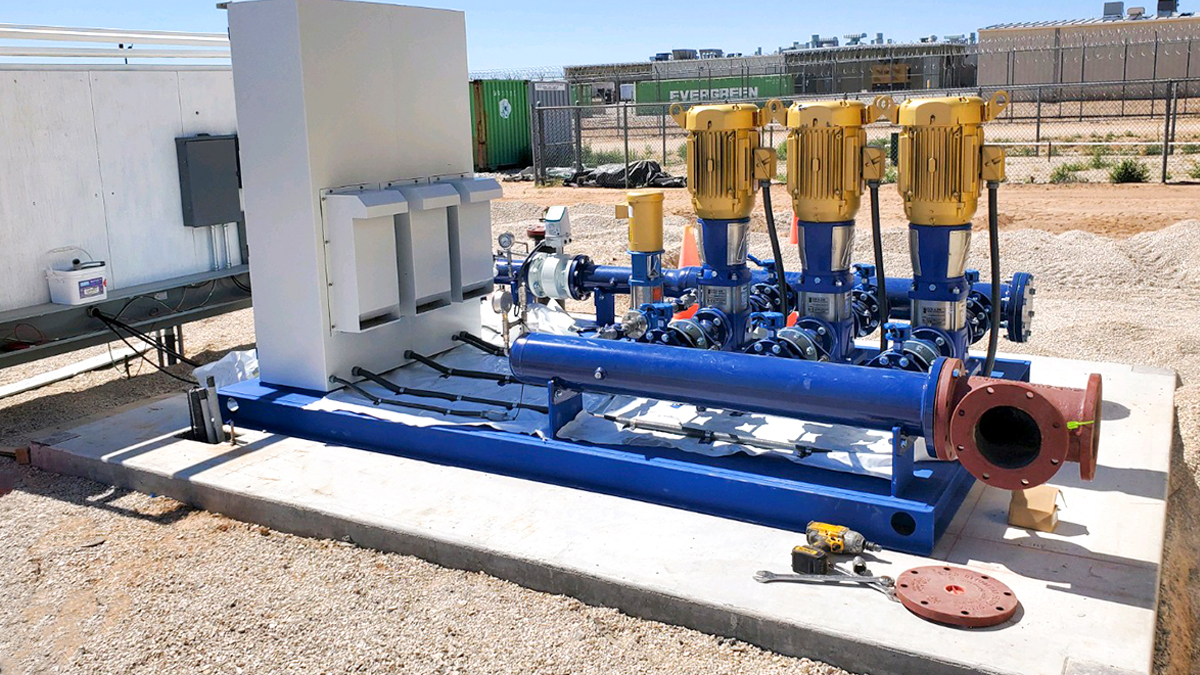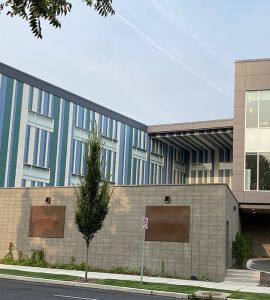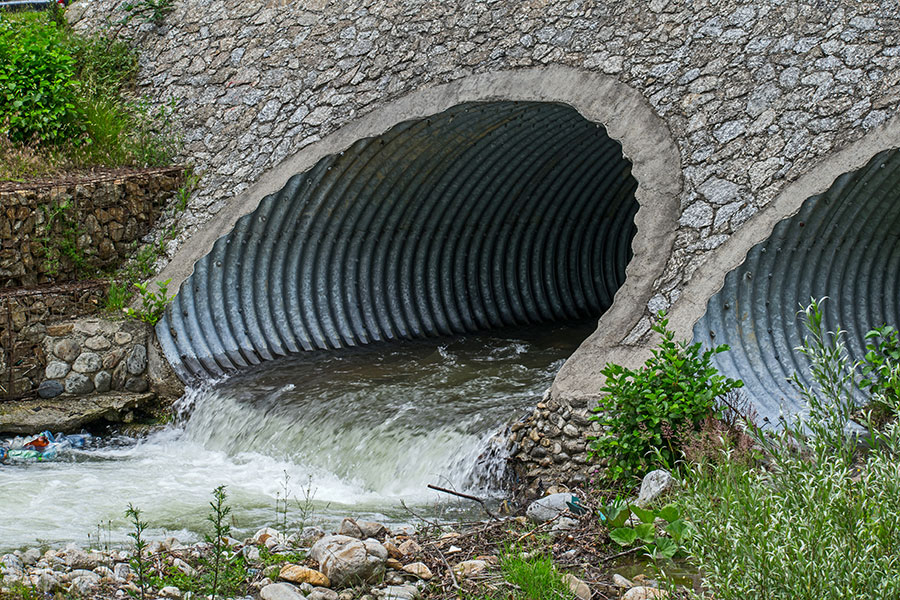OU to Lead One of Four National Stormwater Centers of Excellence – The University of Oklahoma
By
Kat Gebauer
[email protected]
Date
NORMAN, OKLA. – The University of Oklahoma, led by principal investigator Jason Vogel, Ph.D., P.E., director of the Oklahoma Water Survey and a professor in the School of Civil Engineering and Environmental Science, has been selected to lead one of four new Stormwater Centers of Excellence funded by a two-year federal grant. The center, called the Great Plains Center for Green Advanced Stormwater Solutions, comprises a consortium of organizations working together to improve stormwater management in the region.
According to Vogel, the use of green infrastructure and nature-based solutions for stormwater management is less common in the Great Plains region compared to other parts of the country. Traditionally, stormwater management has been done through “grey infrastructure” like pipes and concrete channels. Vogel says that over the past 30 years, there has been an increasing transition into “green infrastructure,” such as rain gardens, pervious pavement, rainwater harvesting and constructed wetlands in the region.
Four education institutions, in addition to the University of Oklahoma, form the consortium: Pawnee Nation College, Langston University, Kansas State University and Oklahoma State University. The team will operate in collaboration with a stakeholder advisory group that represents a range of regional stakeholders, including federal, state, Tribal and local governments, non-profits, consulting firms, regional colleges and minority-serving institutions.
Infrastructure and Technology
From OU, Lori Han, Ph.D., and Robert Nairn, Ph.D., in the School of Civil Engineering and Environmental Science, and Pierre Kirstetter, Ph.D., with joint appointments in the Schools of Meteorology and Civil Engineering and Environmental Science, each lead a portion of the center’s workplan.
The center will conduct forensic analysis of green infrastructure stormwater practices in the region to address knowledge gaps related to performance, construction, longevity, and maintenance, led by Jaime Schussler, Ph.D., at Oklahoma State University and Trisha Moore, Ph.D., at Kansas State University, to gain deeper understanding of where current infrastructure stands. Ning Wang, Ph.D. from OSU will lead an effort to monitor green infrastructure in the region using “smart” sensors to optimize performance in these dynamic systems.
“A lot of this technology is designed by engineers and landscape architects, then they are installed by a construction crew that may or may not have direct communication with the designers to understand the function of the different parts involved,” said Vogel. “Sometimes what is installed may be different than what was on the plans. In addition, more development in a drainage area after installation of green infrastructure may cause a practice to be undersized and no longer fully treat the runoff.”
The forensic analysis will discover whether existing infrastructure was installed correctly and if it continues to function as intended.
Water Quality and the Plains
When it comes to stormwater in the Great Plains, climate change creates extremes on both ends of the spectrum: drought and flooding. Adjusting to a changing climate and its extremes means considering different approaches to green infrastructure; for example, rain gardens that experience increased dry periods require plants with different water needs than those that receive regular rain. Kirstetter will lead efforts to highlight the climate adaptation capabilities of green infrastructure in the region.
Water quality is another major concern for Great Plains stormwater management. “The rain washes pollutants off the landscape,” said Vogel.
Contaminants such as nutrients, heavy metals, bacteria and pesticides then enter waterways. Researchers with the center will specifically look at contaminants of emerging concern, contaminants that may be found in waterbodies that may cause harm but are not currently regulated such as asphalt compounds, industrial byproducts, and insecticides.
Addressing Challenges and Engaging Communities
The center will also examine innovative funding sources related to stormwater under the lead of Jason Bergtold, Ph.D., from Kansas State University. According to the country’s 2021 Infrastructure Report Card from the American Society of Civil Engineers, “funding for stormwater infrastructure across the country is limited and comes from multiple sources — local revenue, state and/or federal grants and financing, and non-traditional funding streams.” US stormwater systems received a D on the report, as did other water-related infrastructure, including dams and levees.
“There are a lot of needs in the stormwater world and there are more needs than there is funding,” said Vogel. “Sometimes it’s hard to find ways to fund not only just the building of these systems but also the maintenance funding needs.”
Finding unique funding opportunities is only one part of the battle — convincing communities that green infrastructure is worth the paradigm shift is another.
“This project is not just research,” he added. “It’s connecting innovation with stakeholders in the region and being at the leading edge of answering questions with innovative techniques in the stormwater realm in the region.”
The center also has specific plans to re-engage historically black communities and Tribal nations, with that effort led by Tracey Payton, Ph.D., at Langston University and Felipe Chavez-Ramirez, Ph.D., at Pawnee Nation College, respectively. Vogel says these communities are often hit hardest by stormwater infrastructure issues.
“The areas that disadvantaged groups were historically pushed towards were already in the floodplains because it was less desirable to live there. Those stormwater-related issues exacerbated in floodplains don’t go away,” said Vogel. “Being able to connect these solutions and challenges directly with these communities is something we very specifically called out in our proposal.” Han at OU will lead a study investigating the utilization of green infrastructure in historically “redlined” areas in Oklahoma.
The Great Plains Center for Green Advanced Stormwater Solutions expects to begin programming in January 2025.
About the project
The Great Plains Center for Green Advanced Stormwater Solutions is funded by an expected $1.5 million grant from the Environmental Protection Agency as part of President Biden’s Investing in America agenda. The larger $5 million initiative established four Centers of Excellence for Stormwater Control Infrastructure Technologies and a national clearinghouse for new and emerging stormwater control technologies.
About the University of Oklahoma
Founded in 1890, the University of Oklahoma is a public research university located in Norman, Oklahoma. As the state’s flagship university, OU serves the educational, cultural, economic and health care needs of the state, region and nation. For more information about the university, visit www.ou.edu.
Rayna Kordonowy is not your typical Price College of Business student. Raised in a small town in eastern Montana town with fewer than 10,000 residents, she went on to attend the University of Mary, a small, private Catholic university in Bismarck, ND. In 2012, she earned dual bachelor’s degrees in finance and accounting along with a minor in business administration.
As part of a National Science Foundation-funded effort to better understand storms in the tropics, James Ruppert recently sailed across the Atlantic Ocean for a month-long science cruise.
A study recently published in the journal Nature Astronomy upends conventional wisdom regarding the formation and stability of pairs of orbiting objects in the Kuiper Belt beyond the planet Neptune
More OU News








